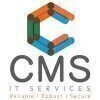Oracle Database Administrator
100+ Oracle Database Administrator Interview Questions and Answers

Asked in Dixit Infotech Services

Q. Tell me about the Oracle database architecture.
Oracle database architecture consists of multiple components like instance, memory structures, and physical storage.
Oracle database architecture includes instance, memory structures, and physical storage.
Instance consists of background processes and memory structures like SGA and PGA.
Physical storage includes data files, control files, and redo log files.
Oracle database architecture allows for scalability, high availability, and performance tuning.

Asked in Path Infotech

Q. Define SGA and shared pool in architecture.
SGA is a shared memory area that stores data and control information for Oracle instance. Shared pool is a part of SGA that stores SQL statements and data dictionary cache.
SGA is a fixed size memory area allocated at instance startup
SGA contains database buffer cache, redo log buffer, shared pool, etc.
Shared pool stores frequently used SQL statements and data dictionary cache
Shared pool can be resized dynamically using ALTER SYSTEM command

Asked in Access Infotech

Q. Have you worked on Oracle Data Guard?
Yes, I have worked on Oracle Dataguard.
I have experience in configuring and managing Oracle Dataguard for disaster recovery.
I have performed switchover and failover operations to test the failover mechanism.
I have monitored and resolved issues related to Dataguard synchronization and network connectivity.
I have also worked on configuring Active Dataguard for read-only reporting purposes.

Asked in Amdocs

Q. What are the different types of objects in a database?
Different types of objects in a database include tables, views, indexes, sequences, and stored procedures.
Tables: Used to store data in rows and columns.
Views: Virtual tables created by a query.
Indexes: Improve the performance of queries by allowing quick access to specific rows.
Sequences: Generate unique numbers.
Stored Procedures: Precompiled SQL code that can be executed with parameters.

Asked in Infosys

Q. What is dba, explain the architecture of dba
DBA stands for Database Administrator. The architecture of DBA involves managing and maintaining databases to ensure data integrity and security.
DBA is responsible for installing, configuring, and upgrading database software.
They monitor database performance and troubleshoot issues.
DBA designs and implements backup and recovery strategies to prevent data loss.
They also manage user access and security permissions within the database.
DBA works closely with developers and system...read more
Asked in Sahana Technologies

Q. Tell me about RAC environment in Oracle DBA.
RAC (Real Application Clusters) is a feature in Oracle DBA that allows multiple instances to access a single database simultaneously.
RAC enables high availability and scalability by distributing the workload across multiple nodes.
Each node in a RAC environment has its own instance of Oracle Database and shared access to the same database.
RAC requires a shared storage solution like Oracle ASM (Automatic Storage Management) or a cluster file system.
RAC environments can be confi...read more
Oracle Database Administrator Jobs




Asked in Wistron

Q. How do you check DR DC sync?
To check DR DC sync, use Data Guard Broker or query V$DATAGUARD_STATS view.
Use Data Guard Broker to check the status of the standby database and its synchronization with the primary database.
Query V$DATAGUARD_STATS view to check the redo apply lag and transport lag between the primary and standby databases.
Check the alert log files of both primary and standby databases for any errors or warnings related to data synchronization.

Asked in Amdocs

Q. How to configure RAC in detail? Shell scripting SQL scripting
Configuring RAC involves setting up shared storage, network, and database components on multiple nodes.
Configure shared storage using ASM or NFS
Configure network components such as VIP, SCAN, and listener
Install Oracle Grid Infrastructure and Oracle Database software on all nodes
Create a RAC database using DBCA or manually
Configure load balancing and failover using services
Use shell scripting and SQL scripting to automate tasks
Perform regular maintenance tasks such as patchin...read more
Share interview questions and help millions of jobseekers 🌟


Asked in Amdocs

Q. What is view synonym mview Explain datapump Oracle goldengate in detail
A materialized view (mview) is a database object that contains the results of a query. Datapump is a tool for moving data between Oracle databases. Oracle GoldenGate is a real-time data integration and replication tool.
Materialized views (mviews) store the results of a query for faster access.
Datapump is a tool used for exporting and importing data between Oracle databases.
Oracle GoldenGate is a real-time data integration and replication tool used for moving and synchronizing...read more

Asked in Wipro

Q. How do you control interview severance?
Controlling interview severance involves managing the process and ensuring a smooth transition for candidates.
Establish clear criteria for severance to avoid ambiguity.
Communicate openly with candidates about the process and timelines.
Provide feedback to candidates post-interview to help them improve.
Ensure all legal and company policies are followed during severance.

Asked in Intellect Design Arena

Q. Do you have knowledge of cloud technologies?
Yes, I have knowledge on cloud computing.
I have experience working with cloud databases like Oracle Cloud Database
I am familiar with cloud storage solutions like Amazon S3 and Google Cloud Storage
I have implemented cloud backup and disaster recovery strategies in previous roles

Asked in Intellect Design Arena

Q. Do you have knowledge of other RDBMS?
Yes, I have knowledge on other RDBMS such as MySQL, SQL Server, and PostgreSQL.
I have experience working with MySQL, including database design and optimization.
I am familiar with SQL Server and have performed tasks such as backup and recovery.
I have worked with PostgreSQL and have knowledge of advanced features like partitioning and replication.

Asked in PTC

Q. What are the commands for RMAN backups, and what are the differences between them?
RMAN backups can be performed using commands like BACKUP DATABASE, BACKUP ARCHIVELOG, BACKUP CONTROLFILE, etc.
BACKUP DATABASE: used to backup the entire database
BACKUP ARCHIVELOG: used to backup archived redo logs
BACKUP CONTROLFILE: used to backup the control file
BACKUP TABLESPACE: used to backup specific tablespaces
BACKUP AS COPY: used to create a physical copy of data files during backup

Asked in TCS

Q. Configuration parameters in data guard setup
Configuration parameters play a crucial role in setting up Data Guard for Oracle databases.
LOG_ARCHIVE_DEST_1 and LOG_ARCHIVE_DEST_2 are used to specify the locations where archived redo logs are stored.
FAL_SERVER and FAL_CLIENT parameters are used for automatic recovery in case of a failover.
DB_UNIQUE_NAME parameter is used to uniquely identify each database in a Data Guard configuration.
LOG_ARCHIVE_CONFIG parameter is used to specify the configuration for archiving redo log...read more

Asked in RxLogix Corporation

Q. What is the Data Pump utility used for?
Data pump utility is used for fast data and metadata movement between databases.
Used for high-speed data and metadata movement between databases
Can be used to export and import data and metadata
Provides parallelism and network-based export and import
Can be used to move data between different Oracle database versions
Can be used to move data between different operating systems
Examples: expdp, impdp

Asked in Infosys

Q. What do you mean by lean supply chain?
A lean supply chain focuses on minimizing waste and maximizing efficiency in the flow of goods and services.
Focuses on reducing waste in all aspects of the supply chain
Emphasizes efficiency in production, transportation, and distribution
Involves continuous improvement and optimization of processes
Utilizes tools like Just-In-Time inventory management and Kanban systems
Examples include Toyota's production system and Dell's direct sales model

Asked in Avekshaa Technologies

Q. What are the causes of query slowness?
Causes of query slowness can include inefficient queries, lack of indexes, outdated statistics, hardware limitations, and network latency.
Inefficient queries - poorly written queries that do not utilize indexes or join tables unnecessarily
Lack of indexes - missing indexes on columns frequently used in queries
Outdated statistics - outdated or inaccurate statistics can lead to poor query execution plans
Hardware limitations - insufficient memory, CPU, or disk I/O can impact quer...read more

Asked in Amdocs

Q. How do you restore the database using RMAN?
Restoring a database using RMAN involves connecting to the target database, restoring the control file, and recovering the database.
Connect to the target database using RMAN
Restore the control file from a backup
Restore the datafiles and tablespaces
Recover the database to bring it to a consistent state
Perform necessary checks and validations after restoration

Asked in Path Infotech

Q. What is LNS, what is MRP process
LNS stands for Log Network Server, responsible for transmitting redo data from the primary database to standby databases. MRP is Managed Recovery Process, used to apply redo data to standby databases.
LNS is responsible for transmitting redo data from primary to standby databases
MRP is used to apply redo data to standby databases for data recovery
LNS and MRP are essential components of Oracle Data Guard for ensuring data protection and availability
Asked in Sahana Technologies

Q. What are physical files in Oracle DBA?
Physical files in Oracle DBA refer to the actual files on the operating system that store database data and metadata.
Physical files include datafiles, control files, redo log files, and archive log files.
Datafiles store the actual data of the database.
Control files store metadata about the database structure.
Redo log files store a record of changes made to the database.
Archive log files store a copy of redo log files for backup and recovery purposes.

Asked in Hexaware Technologies

Q. How do you synchronize primary and standby databases?
Primary and standby databases can be synced using Data Guard in Oracle.
Configure Data Guard on primary and standby databases
Enable redo transport services
Monitor and resolve any synchronization issues
Perform switchover or failover when necessary

Asked in CMS IT Services

Q. How do you start RFS and MRP services?
To start RFS and MRP Service in Oracle Database, you can use the ALTER SYSTEM command.
Connect to the Oracle Database as a user with SYSDBA or SYSOPER privilege.
To start RFS (Remote File Server) Service, execute the following command: ALTER SYSTEM SET REMOTE_LISTENER='listener_name' SCOPE=SPFILE;
To start MRP (Managed Recovery Process) Service, execute the following command: ALTER DATABASE RECOVER MANAGED STANDBY DATABASE DISCONNECT FROM SESSION;

Asked in Access Infotech

Q. Explain the Oracle database architecture.
Oracle database architecture consists of memory structures, background processes, and physical files.
Memory structures include SGA and PGA
Background processes include PMON, SMON, DBWn, LGWR, CKPT, etc.
Physical files include data files, control files, redo log files, etc.
Oracle database architecture follows a client-server model
Oracle database architecture supports multi-tier architecture

Asked in Oracle Financial Services Software

Q. Fundamentals of Oracle DB and Architecture
Fundamentals of Oracle DB and Architecture
Oracle Database is a relational database management system (RDBMS)
It uses SQL (Structured Query Language) for querying and managing data
Consists of physical and logical structures like data files, tablespaces, and schemas
Architecture includes components like instance, memory structures, and background processes

Asked in Hexaware Technologies

Q. What are your responsibilities in a Real Application Cluster environment?
Real Application Cluster (RAC) is a cluster database with shared disk architecture.
RAC allows multiple instances to access a single database simultaneously.
It provides high availability and scalability.
RAC uses Oracle Clusterware to manage the cluster.
Load balancing and failover are automatic in RAC.
RAC requires additional hardware and software licenses.
Asked in Zygox Infotech

Q. what is dba what are therequirement
A DBA is a database administrator who manages and maintains a company's database system.
DBA stands for Database Administrator
They are responsible for managing and maintaining a company's database system
They ensure data security, backup and recovery, performance tuning, and database design
Requirements include knowledge of SQL, database architecture, and experience with database management systems
Certifications such as Oracle Certified Professional (OCP) are often preferred
Asked in Cloud Solutions

Q. What are your day-to-day activities as a database administrator?
A database administrator's day-to-day activities involve monitoring, maintaining, and optimizing the database system.
Monitoring database performance and availability
Performing backups and recovery operations
Installing and configuring database software
Managing user accounts and security
Optimizing database performance through tuning and indexing
Troubleshooting and resolving database issues
Implementing database upgrades and patches
Collaborating with developers and other IT staff...read more

Asked in RxLogix Corporation

Q. What are the use cases for SGA and PGA?
SGA and PGA are memory structures used by Oracle Database to store data and metadata.
SGA (System Global Area) is a shared memory area that stores data and control information for the entire database instance.
PGA (Program Global Area) is a memory area that stores data and control information for a single server process.
SGA is used to store shared data such as database buffers, shared SQL areas, and redo log buffers.
PGA is used to store private data such as session-specific var...read more

Asked in Hexaware Technologies

Q. How do you add a diskgroup in disks?
To add a diskgroup in disks, use the CREATE DISKGROUP command in Oracle ASM.
Ensure that the disks are initialized and partitioned
Use the ASMCA (ASM Configuration Assistant) or ASMCMD (ASM Command-Line Utility) to create the diskgroup
Specify the diskgroup name, redundancy level, and the disks to be included in the diskgroup
Example: CREATE DISKGROUP dg1 NORMAL REDUNDANCY DISK '/dev/sdb1', '/dev/sdc1'
Asked in Sahana Technologies

Q. Tell me about Oracle Architecture.
Oracle Architecture is the structure and components of the Oracle database system.
Consists of physical and logical structures
Physical structures include data files, control files, redo log files
Logical structures include tablespaces, schema objects
Uses memory structures like SGA and PGA for processing data
Processes like background processes and server processes handle database operations
Interview Questions of Similar Designations
Interview Experiences of Popular Companies





Top Interview Questions for Oracle Database Administrator Related Skills



Reviews
Interviews
Salaries
Users

















